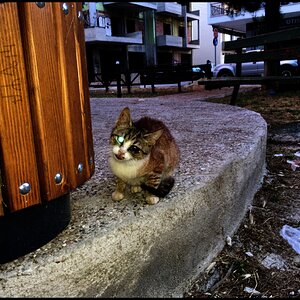SimplyMo
TPF Noob!
- Joined
- Jul 17, 2008
- Messages
- 58
- Reaction score
- 0
- Location
- temporarily BUFFALO new york
- Can others edit my Photos
- Photos NOT OK to edit
cirlces of confusion--when they are over sized, these are what cause an image to appear not sharp/out of focus (because the light rays coming through the lens have spread too widely before reaching the film/sensor causing the cirlces to be larger and overlap), is that right?
grain/noise in an image is cause by the over sized silver crystals in the film/sensor (that were purposely made larger to allow for the light-sensitive material to be more sensitive to light), is that right?
but just because a film speed may be fast, and appear grainy and not as sharp as a slower film, this is different than if the cirlces of confusion were to cause an image to be out of focus, right?
does any of this make sense??
i know this is really probably not that important --it's just a sudden random thought i stumbled across...
grain/noise in an image is cause by the over sized silver crystals in the film/sensor (that were purposely made larger to allow for the light-sensitive material to be more sensitive to light), is that right?
but just because a film speed may be fast, and appear grainy and not as sharp as a slower film, this is different than if the cirlces of confusion were to cause an image to be out of focus, right?
does any of this make sense??
i know this is really probably not that important --it's just a sudden random thought i stumbled across...



![[No title]](/data/xfmg/thumbnail/32/32637-865ab9beec7e00237b64e4fcb8fe947f.jpg?1619735555)
![[No title]](/data/xfmg/thumbnail/40/40297-5b7d12c4c72c43b505a6f575d338d573.jpg?1619739411)
![[No title]](/data/xfmg/thumbnail/32/32634-5acd0e44e1d927b93e8723d9184555d9.jpg?1619735554)

![[No title]](/data/xfmg/thumbnail/40/40293-6f5ffaecd4c1aac1ffc73bb0972aab51.jpg?1619739410)



![[No title]](/data/xfmg/thumbnail/30/30995-7e48e5498fe9a56ea3d405cf87f3a1ec.jpg?1619734558)

